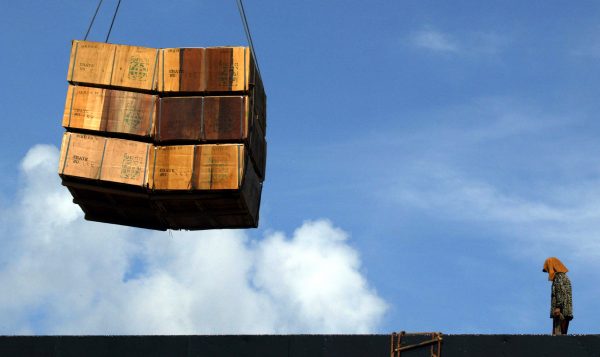When Jokowi campaigned in 2014, Indonesia’s logistics cost was 27 per cent of GDP, far higher than Thailand’s 15 per cent, which was his target for 2019. While recent studies estimate the cost has decreased to 21–23 per cent of GDP, it remains above Indonesia’s ASEAN peers. The 2023 Logistics Performance Index ranks Indonesia 61st out of 139 countries, which represents a decline from its 2014 rank of 53rd.
During his first term, Jokowi introduced his logistics flagship initiative — the sea highway program (Tol Laut). The program was launched at the end of 2015, mainly to stimulate the growth of Indonesia’s periphery areas. Economic growth has always been concentrated in the western side of the country, especially the island of Java. The sea highway program aimed to introduce shipping services to facilitate trade and economic growth in the periphery.
The program was designed to set up a subsidised liner service to regularly service ports in remote areas. The government appointed one of its state-owned enterprises (SOEs), PT Pelni, to operate the service. Initially, the government provided subsidies to facilitate the opening of certain routes. Now that there are 35 routes open, subsidies are only given to goods that the Ministry of Trade has deemed primary, important or otherwise eligible.
The operators of the program have also shifted from SOEs to a group that includes private companies. Among those are Temas and Meratus, two of the largest shipping companies in the country. Utilising a hub and spoke model, these two operators make up the hub and service the main lines. At the spokes, SOEs pick up the cargo, deliver it to the periphery region and take any cargo from the periphery back to the hub.
The program has faced several challenges. First, the return loads were almost always empty, amounting to only 2 per cent of the outgoing load in 2018. To encourage return loads, in 2019, the government lowered the tariff for return loads to be up to 50 per cent cheaper than the equivalent outgoing tariff. This policy lowered operational costs for the periphery economy and increased return loads to 30 per cent of outgoing loads. While this policy increased liner revenue, it is unclear if it is sustainable without the incentive of the lower tariff.
Second, the program transports mostly containerised cargo, where each container can amount to 25 tons or more. Unfortunately, most small and medium enterprises (SMEs) find it hard to fill a container of this size with their own products, so there is a need for a consolidator at the periphery end to gather and consolidate products from many SMEs. This is where the program falls short — subsidies only apply to freight and don’t apply to handling at the loading and destination ports.
Third, infrastructure in periphery regions is often minimal at best and not optimised for receiving this kind of cargo. Freight subsidies slash freight costs but do nothing to improve logistics conditions at the destination ports.
Indonesia must also improve its international trade logistics. Indonesia’s largest port, Tanjung Priok, handled only around 6 million 20-foot equivalent units in 2017, lagging behind Malaysia’s 20 million and Singapore’s 33 million. Investing in ports presents a major problem given Indonesia’s expensive and shallow credit market. Foreign direct financing is limited since the port is owned mostly by the government.
In the courier business, Indonesia limits foreign ownership in courier companies to 49 per cent, far below Thailand and Brunei at 70 per cent and Vietnam at 100 per cent. While most countries in the region have a cabotage law that requires domestic shipping to be conducted by local players, this is a more substantial barrier for Indonesia since it is largely archipelagic.
Port development may benefit from Indonesia’s new sovereign wealth fund, which forms part of Jokowi’s state capitalist development strategy.
Indonesia still falls short in soft infrastructure as well. The Indonesian National Single Window had a rocky start during its early stages, which led Indonesia to be a relatively late joiner of the ASEAN Customs Declaration Document. The Indonesian physical check for imported goods can take as long as seven days, which is longer than Vietnam’s three days and Malaysia’s one day.
Indonesia could use income from maritime industries to finance its investment and subsidies for the peripheries. This could be attained by taxing specialised liners that ship Indonesia’s hot commodities such as coal, palm oil and minerals. Indonesia could also consider relaxing its foreign shipping limitations, which would encourage competition and investment in the logistics ecosystem.
Admittedly, Indonesia’s unique archipelagic nature presents more challenges than its ASEAN peers in the logistics sector. The sea highway does not seem to have solved the main problem, and Jokowi is running out of time. There may be better ideas proposed by Indonesian presidential candidates during their campaigns for the upcoming 2024 election.
Krisna Gupta is a lecturer at Politeknik APP Jakarta and an associate researcher at the Center for Indonesian Policy Studies.
Dhany Ratana is a lecturer at Politeknik APP Jakarta.

